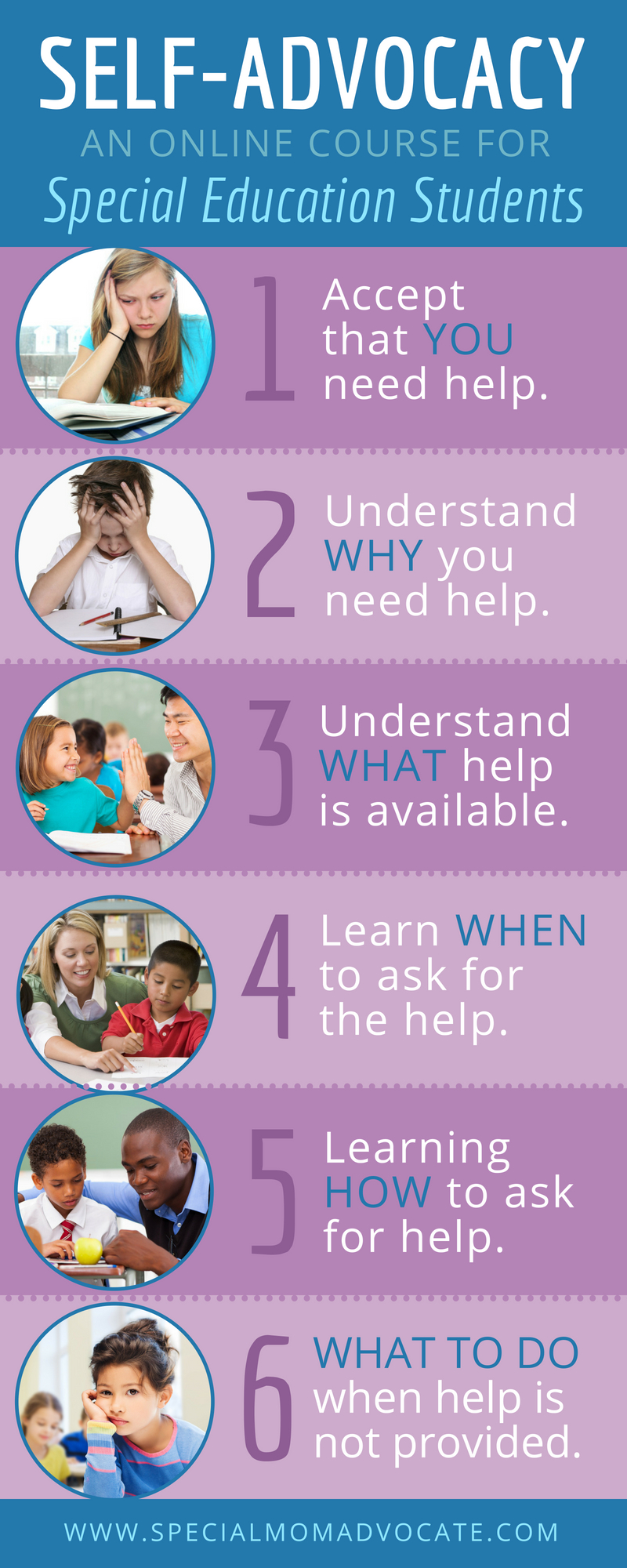 In all my advocacy work as a parent, and all the individual work with students, I have found self-advocacy to be one of the most important skills that a student can develop.
In all my advocacy work as a parent, and all the individual work with students, I have found self-advocacy to be one of the most important skills that a student can develop.
Self-advocacy is the ability to ask for the support that is needed in order to be successful in school and at work.
In working in schools, I have found that almost ALL students are not even aware of what is in their IEP or 504 plan, let alone the specific accommodations they are entitled to. As a result, these students often do not get the much-needed support because teachers forget, don’t know or choose not to provide accommodations. If a student cannot ask for help, how are they suppose to get it?
I have found it is empowers students when they learn to self-advocate. It not only boost self-confidence when they realize they can control the help coming their way, but it also ensures their IEP or 504 plan is being utilized to the fullest extent possible.
As parents we always want to help our kids, but we can’t go to school with them every day to make sure their accommodations and modifications are provided to them. Teaching your child to self-advocate is the next best thing to you being there.
I have developed an online course to teach Self-advocacy to Special Ed Students.
In my course I cover the 6 critical steps to learning how to get the support your special education plan is suppose to provide:
- Accept that YOU need help
- Understand WHY you need it.
- Know WHAT help is available.
- Learn WHEN to ask for her.
- Learn HOW to ask for help.
- WHAT TO DO when help is not provided.
In my course I teach a detailed road map for self-advocacy development. It includes 12 printables and detailed exercises to ensure your child learns everything needed to self-advocate in school.
The following infographic summarizes the steps to learning self-advocacy.
ABOUT THE AUTHOR:
Bonnie Landau is a professional counseling and holistic therapist in Ventura County, California. Her specialities include therapy for autism, therapy for ADHD, and therapy for parenting who have kids with autism or ADHD or other neurodivergence. She changed careers from graphic design to counseling with the goal of helping struggling parents of kids with ADHD, autism, or other neurodivergence find strategies and solutions to help their children succeed. Bonnie is also the author of Special Ed Mom Survival Guide: How to Prevail in the Special Education Process and Find Life-long Strategies for You and Your Child.




